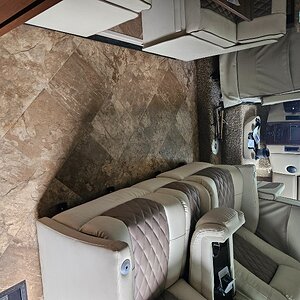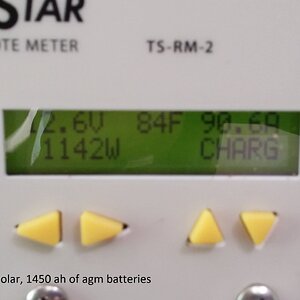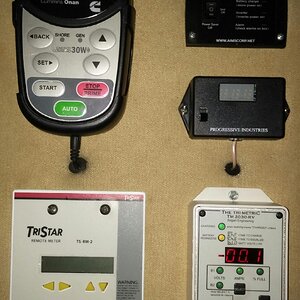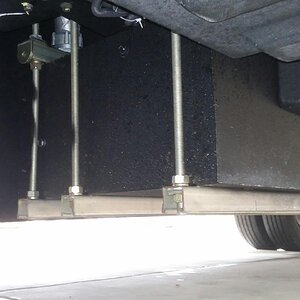AbdRahim
RVF Supporter
- Joined
- Dec 25, 2019
- Messages
- 3,923
- RV Year
- 2020
- RV Make
- Newmar
- RV Model
- BayStar 3626
- RV Length
- 37’
- Chassis
- Ford
- Engine
- V10
- TOW/TOAD
- None
I thought this might be very educational for all. Describe an RV leak you experienced, how you found the source of the water, and how it was repaired.
Leak #1
One night about 1 AM, I heard a driping noise during a torrential rain. upon investigation, I( saw water dripping from a screw holding up the shroud on the bathroom skylight. When I took the screw out the water began a steady flow. I covered the roof with a plastic garbage bag, weighted down with protien drinks and taped with Gorilla tape until mornig. Fortunately a local RV repair place took me in early the next morning. The tech found the source of theleak and sealed it with ProFlex liquid.
Leak #2
I had pink spots develop on the ceiling of my previous MH, shortly after I purchased it. There was much discussion on the internet about it's source and how to remove the stains. In my case nothing was able to remove the satin and more appeared with time. One day I noticed a musty odor in the front just behind the cab (class C). It had a soft ceiling, fortunately. I pulled down a section of the ceiling and stuck my hand. in To my horror it was soaking wet in there. Assuming it was a roof leak, I began furiously checking and re-sealing, all to no avail. Finally, I saw the black mold and contacted the manufacturer. They agreed to replace the roof. When I picked it up, I was informed that there is a seam where the roof meets the sidewall, that is supposed to be caulked. On mine they neglected to put any sealant there. So, it water was coming in from front to back all along that seam. They did a great job replacing everything. The first thing I did after that was to get RV Armor.
Leak #1
One night about 1 AM, I heard a driping noise during a torrential rain. upon investigation, I( saw water dripping from a screw holding up the shroud on the bathroom skylight. When I took the screw out the water began a steady flow. I covered the roof with a plastic garbage bag, weighted down with protien drinks and taped with Gorilla tape until mornig. Fortunately a local RV repair place took me in early the next morning. The tech found the source of theleak and sealed it with ProFlex liquid.
Leak #2
I had pink spots develop on the ceiling of my previous MH, shortly after I purchased it. There was much discussion on the internet about it's source and how to remove the stains. In my case nothing was able to remove the satin and more appeared with time. One day I noticed a musty odor in the front just behind the cab (class C). It had a soft ceiling, fortunately. I pulled down a section of the ceiling and stuck my hand. in To my horror it was soaking wet in there. Assuming it was a roof leak, I began furiously checking and re-sealing, all to no avail. Finally, I saw the black mold and contacted the manufacturer. They agreed to replace the roof. When I picked it up, I was informed that there is a seam where the roof meets the sidewall, that is supposed to be caulked. On mine they neglected to put any sealant there. So, it water was coming in from front to back all along that seam. They did a great job replacing everything. The first thing I did after that was to get RV Armor.












